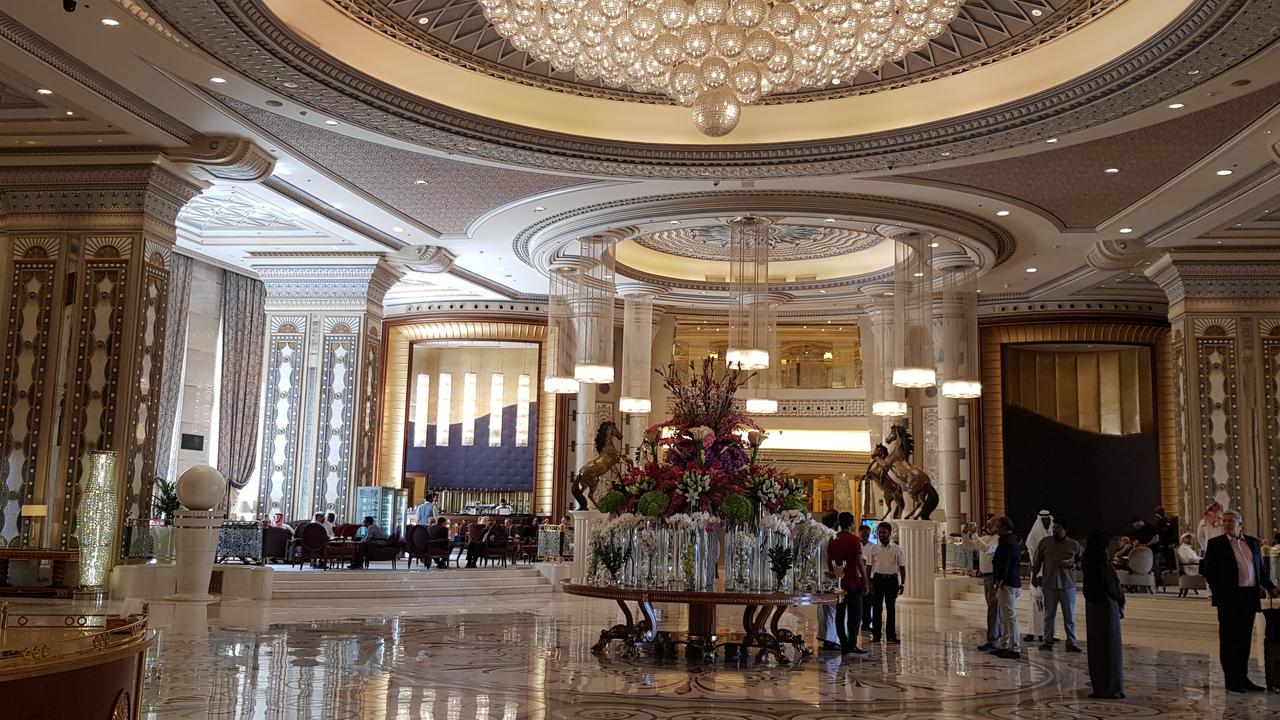Behind-the-scenes look at Riyadh’s Ritz-Carlton where Mohammed bin Salman imprisoned royal rivals
In 2017, Saudi Arabia’s crown prince imprisoned his rivals inside Riyadh’s glitzy Ritz-Carlton. This is what the notorious hotel is really like.

Saudi Arabia’s de facto ruler Mohammed bin Salman made global headlines almost two years ago when he caged his powerful rivals inside Riyadh’s luxurious Ritz-Carlton hotel.
It was an unprecedented move that sent shockwaves through the kingdom, and cemented the young royal — widely known as MbS — as a force to be reckoned with.
The world was spellbound by the story of blue bloods and billionaires effectively held hostage within the lavish hotel walls — and soon, allegations of coercion and even torture emerged.

Last month, news.com.au visited Saudi Arabia for the launch of the kingdom’s new visa program which was held at the notorious hotel just shy of the two-year anniversary of the shock purge.
There, news.com.au received a private, behind-the scenes tour of the so-called “gilded prison” — and this is what it’s really like inside.
MbS’ POWER MOVE
On November 4, 2017, hundreds of Saudi royals, wealthy businessmen and high-ranking government officials were arrested and taken to the hotel — which had been commandeered by officials — at midnight.
Among the high-class prisoners were billionaire Prince Alwaleed bin Talal and media baron Waleed al-Ibrahim.

The roundup was the result of a new committee led by the heir to the throne, MbS, which was supposedly formed to crack down on rampant corruption, power abuses and money laundering.
However, critics have also suggested it may have been carried out to seize money from powerful Saudis or an attempt to smack down potential rivals as the crown prince prepares to take over the throne from his father, King Salman.
During the purge, the Ritz-Carlton stopped accepting new guests and told existing ones to leave.


Private jets were also grounded in a bid to stop wealthy Saudis from fleeing the country, while banks froze the accounts of thousands of uber-rich clients.
While the elites were held in one of the country’s most opulent environments, allegations of beatings, psychological abuse and torture soon surfaced.
Most of the “guests” were eventually released after several weeks, in exchange for staggering cash payments, and the hotel reopened as normal in February 2018.
INSIDE THE GILDED PRISON
The Ritz-Carlton describes itself as one of “the most majestic five-star hotels in Saudi Arabia” — and it’s easy to see why.
It is set on 210,437sq m, complete with 492 rooms over nine storeys — including deluxe royal suites and executive rooms.


There are ballrooms, event spaces, multiple fine dining options, a bowling alley and even a cigar lounge.
There’s also a seriously impressive, huge indoor heated pool, and a spa offering a variety of treatments — although, disappointingly, it’s strictly for men only.
During news.com.au’s tour, the guide covered the main attractions of the hotel as well as a sneak peak inside one of its 48 executive suites — and one of its 48 royal suites, which can set you back more than $A13,000 for a single night depending on when you book.
The sprawling, 400sq m royal suites come with one bedroom with a king bed, another with two twin singles and cater for a maximum of six people.
They boast four bathrooms, multiple huge lounge areas, a private study and a kitchen and dining area, with guests able to bring their own staff or make use of the hotel’s butler service.

It is almost unbelievably opulent, complete with chandeliers, marble, gold finishings and plush carpet and furniture as far as the eye can see.
But one of the most surprising things to come out of the tour was not the luxurious surroundings, but the reaction of staff to the dramatic 2017 events.
According to our guide, while the hotel was taken over for weeks on end as it was converted into a makeshift prison for the country’s elites, for workers at least, it was simply business as usual.
“It was absolutely normal — the doors were just closed,” he said.
— The reporter travelled to Saudi Arabia with the assistance of the Saudi Commission for Tourism and National Heritage




